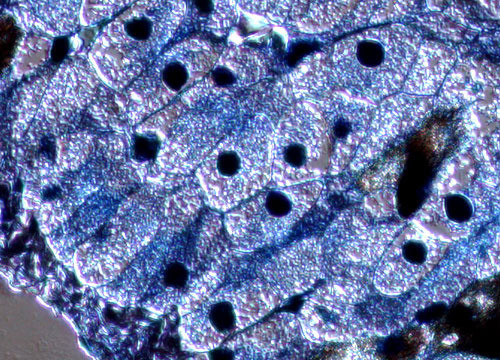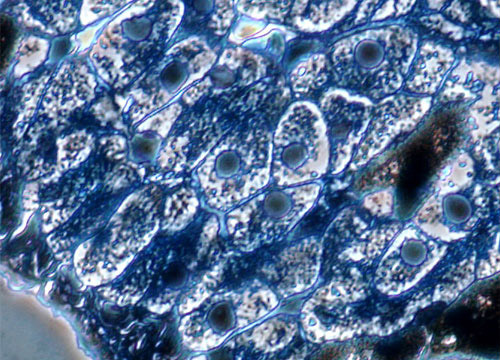Salamander Liver Tissue Mitochondria
Amphiumas are a genus of aquatic salamanders that spend the majority of their lives burrowed in mud and debris. Due to the extremely small size of their limbs, the creatures are frequently mistaken for snakes or eels from a distance.
 DIC
DIC
 Phase
Phase
Phase
Three species of Amphiuma exist and can be differentiated by their number of toes. The two-toed Amphiuma means is the most widely distributed, but there are also three-toed and one-toed varieties that can be found in wetland areas of the southeastern United States. The elongate bodies of Amphiumas can reach up to three feet in length, dependent on species, and their body color is generally dark brown or gray. The undersides ofAmphiumas, however, are usually a lighter shade than the rest of their bodies.
DIC
As predators, Amphiumas have large mouths and numerous very sharp teeth. Their diet typically consists of worms, insects, mollusks, crustaceans, small fish, frogs and other small animals. Females are fertilized internally and can deposit up to 200 eggs at a time under large objects or in depressions in the mud, an area they guard until hatching. As tadpoles,Amphiumas are only a few inches long and have gills and all four limbs. When they grow to maturity, however, only the gill slits remain.















